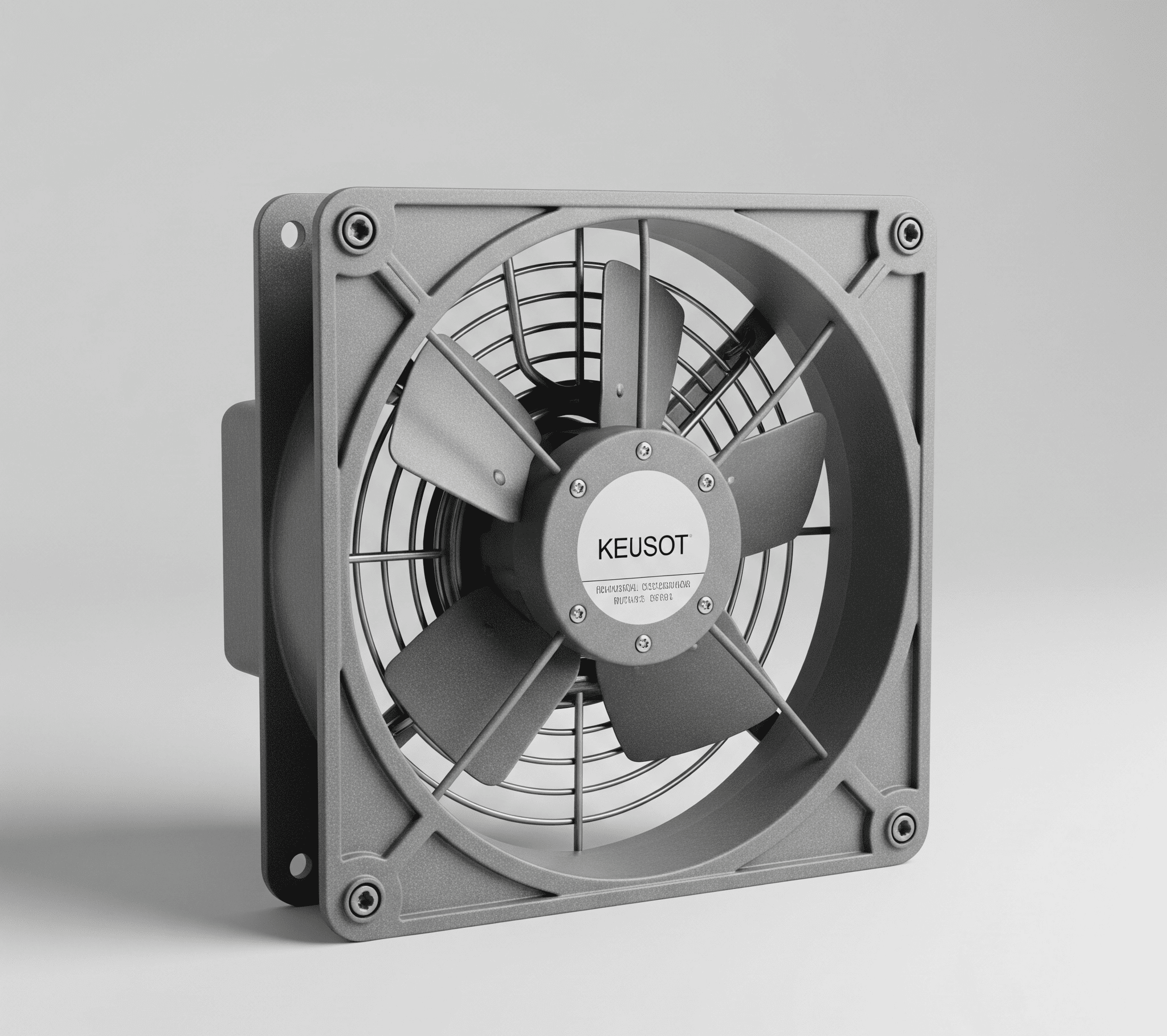Kingsgrove Branch:
How to Clean Exhaust Fan Filters

How to clean exhaust fan filters? This guide is your comprehensive, step-by-step resource for keeping your kitchen or bathroom vent system humming along smoothly and safely. From understanding the different filter types to performing a thorough cleaning and reassembly, we'll cover it all. Get ready to master the art of maintaining your exhaust fan – and breathe easier knowing your system is operating at peak efficiency
Exhaust fan filters, often overlooked, play a crucial role in maintaining the proper functioning of your ventilation system. Regular cleaning prevents clogs, ensures optimal airflow, and prolongs the life of your fan. Different types of filters require different cleaning methods, so understanding these nuances is key. Let's dive in and discover the secrets to a spotless and efficient exhaust fan
Keeping Your Exhaust Fan Running Smoothly: How To Clean Exhaust Fan Filters
Exhaust fans are crucial for removing odors, smoke, and moisture from kitchens, bathrooms, and other areas. Regularly cleaning the filters is essential for optimal performance and safety. This guide walks you through the process, from preparation to prevention
Understanding Exhaust Fan Filters, How to clean exhaust fan filters
Exhaust fan filters play a vital role in maintaining a healthy and functional environment. They trap airborne particles, preventing them from circulating back into the space and keeping the fan running efficiently. Different types of filters offer varying levels of efficiency and ease of maintenance. Choosing the right filter type is key to long-term effectiveness
- Filter Types: Exhaust fan filters come in various forms, including pleated, mesh, and fiberglass. Pleated filters typically offer superior filtration but are often more expensive. Mesh filters are budget-friendly and simple to clean, but their filtration capacity is lower. Fiberglass filters are a common, affordable option
- Material Matters: The material used for the filter impacts its durability and efficiency. Aluminum, plastic, and fiberglass are common materials, each with its own set of advantages and disadvantages
| Filter Type | Advantages | Disadvantages |
| Pleated | High efficiency, long lifespan | More expensive |
| Mesh | Easy to clean, inexpensive | Lower efficiency |
| Fiberglass | Common, affordable | Moderate efficiency, can shed fibers |
Preparing for Filter Cleaning
Before diving into the cleaning process, ensure you have the necessary tools and take proper safety precautions. This minimizes risks and ensures a smooth cleaning experience.
- Gather Your Supplies: You'll need a vacuum cleaner (for pleated filters), mild detergent (for mesh filters), water, a sponge or brush, and gloves. Ensure you have a stepladder if the fan is high up.
- Safety First: Always disconnect the exhaust fan from the power source before cleaning. Follow your home's electrical safety guidelines.
- Disconnecting the Fan: Locate the circuit breaker for the fan and switch it off. This is crucial for your safety.
| Step | Procedure | Safety Precautions |
| 1 | Disconnect power | Turn off breaker |
| 2 | Wear gloves | Prevent skin irritation from dust and debris |
Cleaning Methods
Different cleaning methods apply to different filter types. The key is to use appropriate methods to maintain the efficiency and integrity of the filter
- Pleated Filters: Vacuum cleaning is the best approach. Gently remove the filter and vacuum both sides thoroughly
- Mesh Filters: For mesh filters, you can wash them with a mild detergent solution. Scrub gently to remove any stuck-on food particles or debris
- Fiberglass Filters: Fiberglass filters are often best cleaned by vacuuming or by gently tapping them outdoors to remove loose particles
| Filter Type | Cleaning Method | Tools Required |
| Pleated | Vacuum cleaning | Vacuum cleaner |
| Mesh | Washing with mild detergent | Detergent, water, sponge/brush |
| Fiberglass | Vacuuming or gentle tapping outdoors | Vacuum cleaner (or nothing, if tapping) |
Reassembling and Testing
Reassembling the exhaust fan and testing its functionality is vital to ensure proper operation
- Reassembly: Carefully replace the filter and reconnect the fan to the power source. Double-check all connections
- Testing: Turn on the fan and check for any unusual noises or operation issues. Make sure it's working as it should
| Problem | Potential Cause | Solution |
| Fan not working | Loose connections | Reconnect all wires |
Maintaining Your Exhaust Fan
Regular maintenance helps prevent future issues and maximizes the lifespan of your exhaust fan
- Cleaning Frequency: Clean filters regularly, at least every few weeks, depending on usage. More frequent cleaning is needed for high-use areas
- Preventing Clogging: Keep the area around the exhaust fan clean to prevent excessive buildup of dust and debris
- Preventative Maintenance: Inspect the fan regularly for any signs of damage or wear and tear
Last Point
In conclusion, maintaining your exhaust fan filter is a simple but essential task that significantly impacts your system's performance and longevity. By following the steps Artikeld in this guide, you can ensure your exhaust fan operates at its best, maintaining a healthy and comfortable environment. Remember to prioritize safety, choose the right cleaning method for your filter type, and don't forget the crucial post-cleaning procedures, see how to remove round exhaust fan cover
Happy cleaning
Detailed FAQs
What's the best way to clean a pleated filter?
A vacuum cleaner with a brush attachment is ideal for pleated filters. Gently vacuum the filter from both sides to remove dust and debris
How often should I clean my exhaust fan filters?
Cleaning frequency depends on usage. For light use, monthly cleaning is sufficient. High-use areas might require weekly maintenance
What if my fan still doesn't work after cleaning?
Check for loose connections or tripped circuit breakers. If the problem persists, consult a qualified technician
Can I use harsh chemicals to clean my exhaust fan filters?
Avoid harsh chemicals. Mild dish soap or a specialized exhaust fan cleaner is usually sufficient. Strong chemicals can damage the filter material
Recent posts

Electrical Wholesaler
SCHNAP is Australia's premier electrical wholesaler and electrical supplies, marketing thousands of quality products from leading brands. Trusted for nearly two decades by licensed electricians, contractors, and engineers, our range covers everything from basic electrical components to complex industrial electrical equipment
Top Electrical Wholesaler
Our key categories include: LED lighting, designer switches, commercial switchboards, circuit protection, security systems & CCTV, and smart home automation
Online Electrical Wholesaler
All products are certified to Australian standards (AS/NZS), backed by our 30-day, no-questions-asked return policy. Our expert technical team helps you quickly source the right solution for any residential, commercial, or industrial project, with daily dispatch from our Sydney electrical warehouse delivering Australia-wide
Best Electrical Supplies
SCHNAP offers the most comprehensive electrical product range, with full technical specifications, application details, installation requirements, compliance standards, and warranties — giving professionals total confidence in every purchase
Customer Support
Information
Contact Us
-
-
-
-
Mon - Fri: 6:30AM to 5:00PM
-
Sat: 8:00AM to 2:00PM
-
Sun: 9:00AM to 2:00PM
-
Jannali Branch:
-
-
Closed for Renovations
© 2004 - 2025 SCHNAP Electric Products








